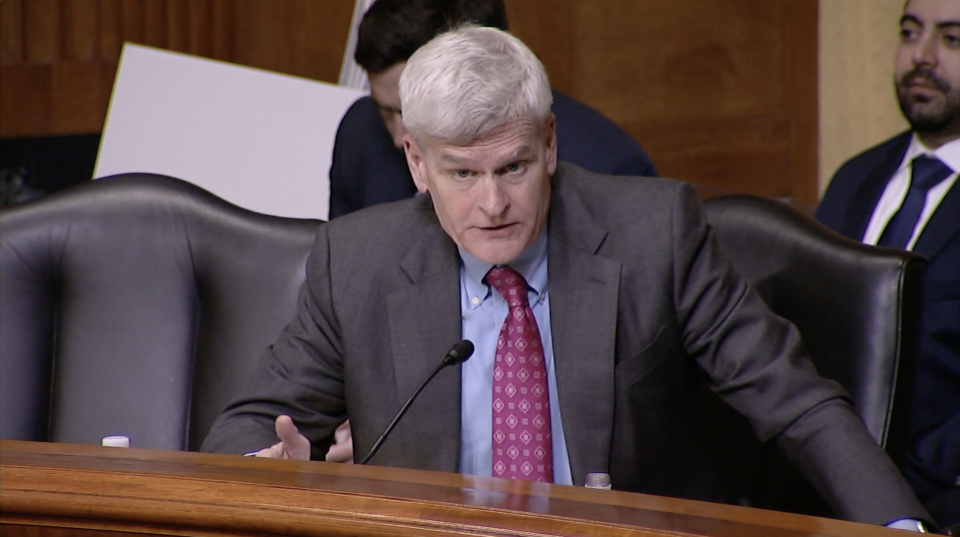
Gibson remains reburial imminent
September 17, 2013
Murphy named Nicholls State’s fifth president
September 17, 2013Authorization of Morganza to the Gulf was omitted from the House of Representatives’ draft of its Water Resources and Development Act bill.
The House’s Committee on Transportation and Infrastructure, chaired by Pennsylvania Republican Bill Shuster, released the bill last week. Language included in the Senate bill – passed earlier this year – that authorized Morganza was reworked in the House’s text, and the twice-authorized, $10.3-billion flood protection project was not included. It is scheduled for markup on Sept. 19.
“I hope as the House debates and amends the bill my House colleagues will be able to add this important project that we included in the Senate version,” Sen. Mary Landrieu (D-La.) said in a printed statement. “If not, I will do everything I can to include Morganza in the final version that heads to the President’s desk for his signature.”
The Senate overwhelmingly passed its WRDA bill in May. If the House passes its own version, a dual-chambered conference committee would attempt to reconcile the bills’ differences.
Sen. David Vitter (R-La.), the ranking Republican on the Senate’s Committee on Environment and Public Works, would surely be on the conference committee.
Louisiana does not have a representative on Transportation and Infrastructure.
Shuster met with Morganza lobbyists and U.S. Rep. Steve Scalise in March, as the Senate was hashing out its version of the bill. “It’s definitely on their radar,” Lori LeBlanc, managing director of the Morganza Action Coalition, told the Tri-Parish Times in reference to the meeting when it took place.
Reggie Dupre, executive director of the Terrebonne Levee and Conservation District, stewards of the half-cent parishwide sales tax for flood protection, said he’s cautiously optimistic the House will pass a bill and the subsequent conference committee process will yield Morganza authorization.
“It looks like both our U.S. senators have basically said they’ll put a hold on the legislation (if it doesn’t include Morganza authorization),” Dupre said. “Generally, when you have Republican and Democratic senators putting a hold on a major piece of legislation, it would be very difficult for it to pass.”
Morganza’s omission could be a negotiating posture for the reconciliation process, Dupre added.
Congress is facing external pressure to pass a WRDA bill, last done in 2007. The U.S. Chamber of Commerce is among the stakeholders trumpeting its importance.
WRDA is not an appropriations bill, so Morganza’s authorization would not automatically mean it receives funding. Not one federal dollar has been allocated toward constructing the system, now proposed at 98 miles of levee ranging from 15 to 26 feet, 31 floodgates and a lock on the Houma Navigational Canal.
Primarily, authorization would indicate the corps believes the project is feasible and that Congress concurs, major victories for the status of a project in which federal development has been dormant.
And as the state anticipates a windfall from increased Gulf of Mexico Energy Security Act-related oil-and-gas royalties in 2017, having a cleared project to spend it on would eliminate any lingering doubts as to whether the money would be credited.
State and local dollars have funded $226 million in Morganza-related projects, with a $95.8 million bond issue stemming from the half-cent sales tax approved last year set to supplement it.
“It is realistic to say that by 2017, we could legitimately have either completed or under construction in the alignment $350 million, which is nothing to sneeze at,” Dupre said.
The state/local share, 35 percent of the project, equates to roughly $3.6 billion.
Even without federal funding, the go-ahead would have significant short-term benefits. Local tax dollars have been dedicated to building a toned-down version, shorter levees in the footprint of the proposed federal project. Each segment that local and state monies fund must be permitted through the corps.
As part of this process, the sponsoring agencies must demonstrate each segment has independent utility, a timely process. This requirement would be eliminated if Congress authorizes the corps’ Environmental Impact Statement on the project.
Authorization may also make the project eligible for federal emergency funding in the aftermath of future storms.
The protection system first received congressional authorization 12 years ago, but it was contingent on the corps filing a feasibility report by Dec. 31, 2000. The corps filed its report more than a year after the deadline, so despite the corps’ favorable judgment Morganza lost authorization.
Seven years later, the project was reauthorized. Weeks after the second authorization, new federal standards were enacted, and the project’s cost skyrocketed, so the responsibility returned to the corps to complete a Post-Authorization Change report, which was released this year.
Whatever the result of the ongoing attempt to get Morganza authorized for a third time, Dupre said, it will receive its share of debate.
“Morganza is the most expensive project in the entire WRDA bill,” Dupre said. “We have the largest and most expensive pending public works water project in the entire United States. … We are literally the elephant in the room.”









